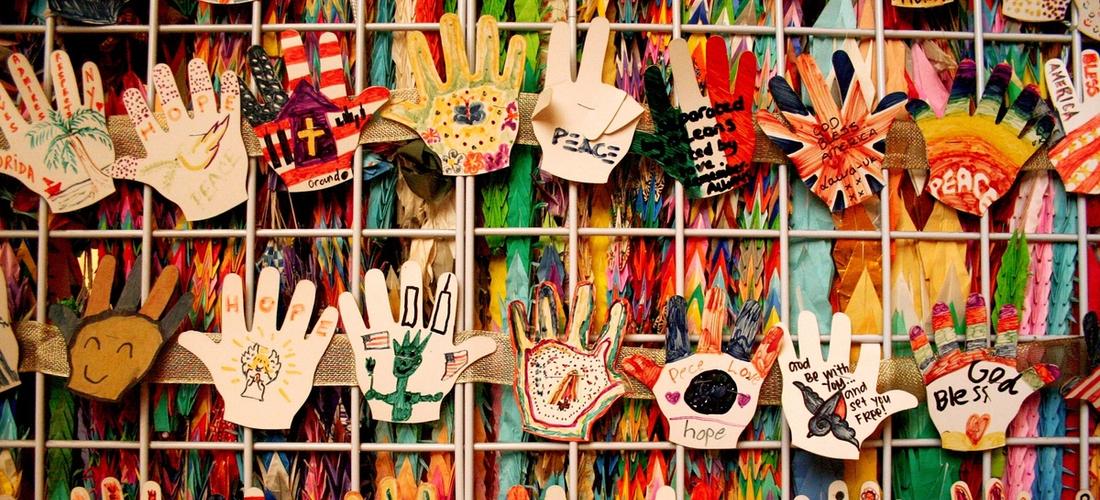Why I Don't Shed Tears on 9/11
Current Events
|
Sep 7, 2021
|
5 MIN READ

Image source: – Eyvn from Pexels
As September 11th approaches, the country prepares for a day of mourning and remembrance of those people slain in a violent attack. While the country will gather together to mourn, it is important to consider whether this national mourning is equally distributed, and is that even remotely possible? The United States has a bitter history of decimating the lives of Black and indigenous people and people of color (BIPOC). Yet days set aside to remember the victims of violence are almost exclusively reserved for events impacting a majority of whites or that which pits “us” against “them,” meaning the U.S. against a foreign entity.
There is no national mourning for the thousands of Black and people of color who have died through individual and governmental white violence.
Exploring how we grieve as a nation reveals a disturbing reality that we have yet to confront our national history of violence and a broad disinterest by our society as a whole to remember and honor the lives lost through systemic violence and the blood of minorities soaking the land.
I realize that in writing this, it may seem like I’m dismissive of the pain and tragedy of 9/11. To be sure, that was a horrific event in modern history that shook this country to its core and set us on many dangerous and life-altering trajectories. But this is not about dismissing one collective trauma for another. This is about recognizing how national mourning tends to happen around certain things rather than others, and how various communities’ trauma are too often ignored or given little importance.
National Mourning
Grief and loss are part of being human. At some point in our lives, we will all grieve for the people who touched our lives. In addition, our cultures encourage us to grieve beyond family and community and mourn as a nation. In the United States, we have a tradition of sharing our grief after a loss. It is one of the ways we coalesce as a social community under one national identity. It is also a way to assign humanity to the victims of atrocities, encouraging us to "never forget" their value.
National mourning is a public display of grief in order to create feelings of empathy, reverence, and respect for the deceased. The problem is that we don’t afford national mourning to all. Societal reactions to historical mass violence on the bodies of BIPOC consistently fall short. Members of this nation, as a whole, remain primed to ignore the bodies of minorities scattered through the land, from sea to shining sea, and the blood saturating it.
And, as much as we may want to ignore or deny it, the color of a victims’ skin does affect whether national mourning occurs and how much attention we give to various tragic and terrible events in history.
According to the Center for Disease Control, the majority of the victims (76 percent) of the September 11th World Trade Center attack were non-Hispanic, whites, making it easier to frame it as a national tragedy that requires perpetual annual observance. This is in addition to the fact that it isn’t a domestic tragedy but rather one where we can frame it as “us” versus a non-white “foreign entity.”

Jason deCaires Taylor, “Vicissitudes” on the ocean floor off the coast of Grenada, thought to be a monument to those lost in the Atlantic Slave Trade (though the sculptor denies this).
My position is not to negate anyone feeling moved to sympathize with people still hurting from the loss of their loved ones and community members. I have sympathy for all the families of the 9/11 victims. However, a day of national mourning for an attack with mostly white victims exemplifies an unsettling contrast, wherein violent catastrophes that involve BIPOC victims stay, for the most part, invisible in the media, history books and national consciousness.
Selective Mourning Of The Past
Historical violence against the Black and people of color populations in the U.S. is not just a point in time, but rather it has occurred numerous times over hundreds of years. Yet BIPOC Americans must struggle to have their mourning of slavery, Indigenous colonization and genocide and racial violence recognized by mainstream society.
The historian in me cannot and will not overlook the duplicity of the national grieving in America – how we languish over the loss of white bodies, including those of secessionist Confederates. While school history books romanticize the nobility of white Southern rebels, accounts of BIPOC resistance to state-sanctioned and social violence and death remain few, sparse. And, there exist modern schemes to purge them from history books, muting them from the U.S. narrative. The majority white nation refuses to remember, let alone grieve.
I refuse to feel compelled to set aside a day to lament when the national consciousness stays complacent about the tragic demise of people of color during atrocities like:
1. Enslaved bodies at the bottom of the Atlantic: "The Atlantic Ocean is an archive of black history; it tells the stories of all those lost in the journey to the Americas, the accounts of what happened aboard each ship, and echoes the anguish of all the words unspoken by the suffered. It was through the Middle Passage, in which the words family, neighbor, friend, wife, brother, sister, were lost." (National Parks Service)
2. Wilmington (North Carolina) massacre of 1898: The murder of 300 and displacement of more than 2,000 Black residents and business owners by white terrorists, angered at the election of Black politicians.
3. Trail of Tears: The murder of approximately 19,000 and displacement of 60,000 Native Americans during the U.S. government's removal of Native Americans from their lands.
4. The Devil’s Punchbowl: The Natchez, MI labor camp, where more than 20,000 Free Black people were trapped and starved to death.
I will not, in good consciousness, engage in the national hallowing of property, destroyed where the World Trade Center once stood, while an estimated $200 million in property of Blacks decimated by white terrorists during the1921 Tulsa Race Massacre and the remains unrecognized.
Any true coalescence through endeavors like national mourning needs to include all of the major tragedies of this nation inflicted on it by foreign, domestic and governmental agents on its people.
Subscribe to be the first to know about new product releases, styling ideas and more.
What products are you interested in?

